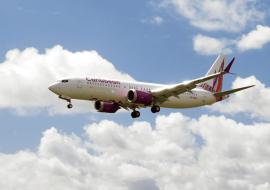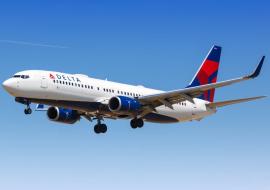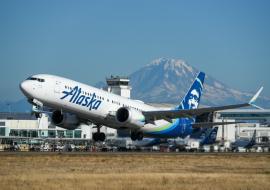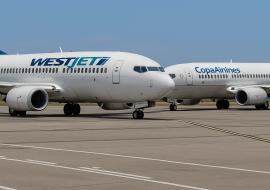LATAM Adding Additional Flights as Brazil Prepares for Carnival
Brazil’s Ministry of Tourism is preparing for the upcoming Lenten Carnival celebration with a series of events ranging from massive block parties (“blocos”) to Carnival balls, all highlighted by the main parades to the Sambodromo on Feb. 14 and 15.
Carnival is celebrated in virtually every Brazilian city, but four will share the spotlight as primary tourist destinations: Rio de Janeiro, Sao Paulo, Salvador, and Recife. Led by travelers to those cities, an estimated 6.8 million tourists will circulate throughout Brazil between Feb. 13 and 17, according to Ministry of Tourism officials.
In preparation for the massive traveler influx, LATAM Airlines Group carriers LAN and TAM Airlines have added 190 additional flights for the Carnival season. The new flights will depart between Feb. 13 and 22 under a “special operations plan” incorporating LATAM’s recently launched passenger control center in Sao Paulo, said company officials this week.
The additional departures include 129 domestic flights within Brazil, mostly serving the immense nation’s Northeast region. Cities in Bahia including Salvador, Porto Seguro and Ilheus account for 70 percent of the additional domestic services, said company officials. Flights to and from Rio account for another 22 percent of the new domestic service.
LAN and TAM will also operate 61 new international flights during Carnival, with most of the new service operating between Sao Paulo and Orlando.
In fact, this year’s Carnival is expected to focus on the 450th anniversary of Rio’s founding, said officials at Embratur, the Brazilian Tourism Board. Rio will once again host the main samba parade on Feb. 14 and 15, and Embratur officials expect up to 977,000 travelers to arrive in Rio between Feb. 12 and 16. In all, the city’s Carnival celebrations are expected to host up to five million revelers.
The enormous main samba parade will showcase a colorful array of the best samba schools in a musical march to the Sambodromo (Samba Stadium) in a two-day competition to determine a 2015 champion.
In addition to the main parade, Rio’s Carnival celebration will feature additional samba parades, Carnival balls, children's parades, and massive neighborhood block parties (“blocos”).
In recent years Rio’s blocos have become nearly as famous as the main samba parade itself. The “Simpatia é Quase Amor” (“friendliness is almost love”) bloco is highlighted by a parade along Ipanema Beach. The "Simpatia” marches twice during Carnival: on the Saturday before the event and during the Sunday of carnival.
The “Banda de Ipanema" (Ipanema’s Band) and "Bloco da Preta Gil" both celebrate the LGBT community with eccentric and enthusiastic parades.
Sao Paulo is expected to welcome 989,000 Carnival visitors during the Carnival period. Parades will take place at the Anhembi Sambodromo, where the top samba schools will compete for the Carnival championship title.
In Salvador, capital of Brazil’s Bahia state, last year’s Carnival celebrations attracted 4 million attendees, gaining the city recognition from the Guinness Book of Records for hosting “the biggest street party in the world.” A total of 550,000 travelers visited the city in the days preceding Ash Wednesday, according to Embratur.
Recife’s population swelled from 1,297,000 residents to more than two million people during the last year’s Carnival celebration. Here the opening ceremony launches with a parade in the Rua da Moeda neighborhood, with dancers swaying to the Recife Carnival’s distinct “frevo” music.
“Carnival is one of the events that shape the tourist identity of Brazil,” said Vinicius Lages, Brazil’s tourism minister. “It is an extremely strategic party because it places us in an outstanding position in the world, not only as organizers of major events, but mainly by the enchantment of a legitimate celebration of Brazilian culture.”
Source: Travel Pulse














